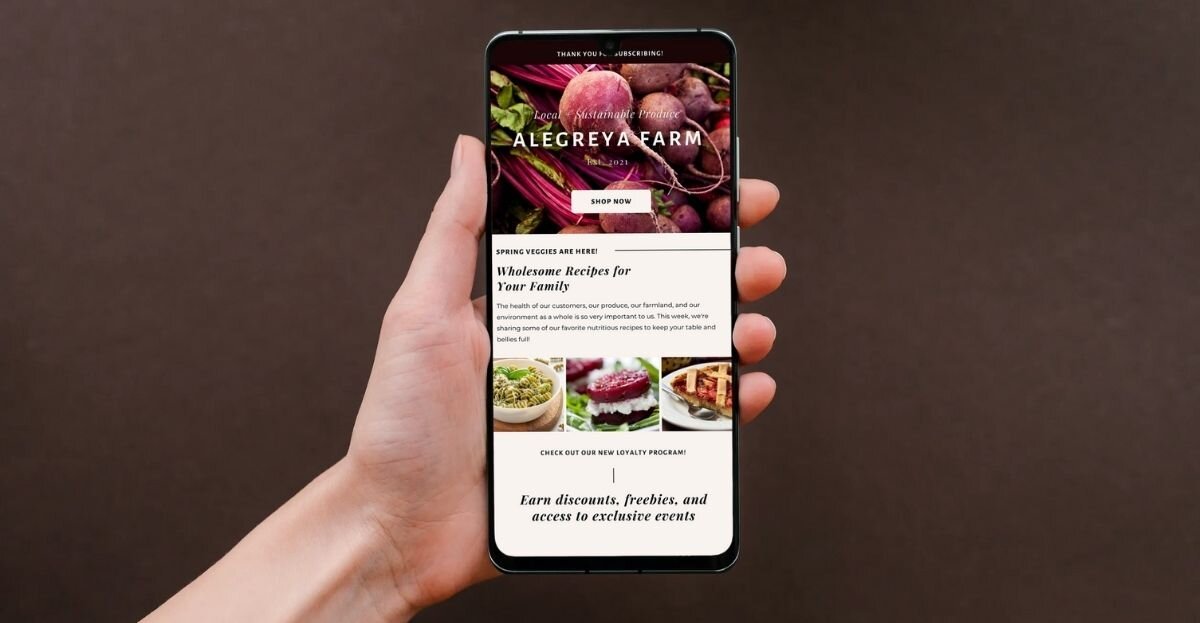Crafting Farm Emails That Get Opens, Clicks, & Conversions
Most farm e-commerce platforms allow you to build a list of emails, and for good reason! When done correctly, email marketing is an incredibly powerful tool that allows you to connect directly with customers as often as you’d like.
But, if your farm has already tried email marketing and didn’t see any results, you might be frustrated. Spending your valuable writing and designing and emails only to have low opens, low clicks, and low conversions can make it feel like you’re just shouting into the void.
In this post, we’ll cover how to know if your emails are performing well and what to do if they’re not. Let’s get started.
How do I know if my farm emails are performing well?
The first step to audit your email marketing efforts is figuring out how your emails are doing. In the direct-to-consumer farm industry, the benchmarks for email performance are as follows:
Open Rate: 35%+
Clickthrough Rate: 2.5%+
Unsubscribe Rate: Below 0.5%
If your email metrics already meet these standards, great job! You’re standing on solid ground, but that’s no reason to settle for average. Some of our clients have seen consistent open rates of over 40%, so why not shoot for the stars? Apply the following tips to continue improving your farm’s email marketing.
If your email metrics don’t meet the above benchmarks, don’t worry. There are plenty of quick and easy steps you can take to see an immediate improvement.
My farm emails are flopping. Help!
If your farm emails are consistently underperforming, first make sure you’d not committing one of the cardinal sins of email marketing:
❌ Buying email lists. This tactic is rare in the local food world, but in case you’re thinking about it—just don’t do it! These contacts have not consented to receiving marketing emails from you. That means they’re likely to report your messages as spam, which can have long-lasting repercussions for your email marketing efforts.
❌ Sending marketing emails to contacts that haven’t opted in. Same as above. When collecting emails, explicitly disclose that you will use the emails for marketing and give customers the opportunity to opt out.
❌ Sending too many emails. What constitutes “too many emails” varies by industry and list size. For a list size of 2,000-5,000, we recommend sending no more than 4-8 emails a month.
Once you’ve confirmed you’re not doing the above, it’s time to take a closer look at your emails. Is it your open rates that are suffering? Click-through rates? Conversions? Rule of thumb: if open rates are low, look at your subject line. (And make sure that you’re following best practices for deliverability — the art and science of getting emails to inbox instead of spam or promotions tab. Check out our post about Drip Email Marketing for a list of best practices for getting to the inbox. ) If click-through rates are low, look at your call-to-action (CTA). If open and click-through rates are high and your email still isn’t converting, take a look at your website—it’s possible people want to buy, but just can’t figure out how.
What makes a good subject line?
Avoid words and phrases that sounds too sales-y, like free, click now, etc. These words CAN be used, just make sure it's sparingly and that there's other valuable content to offset them.
Beyond avoiding clickbait, there’s a lot you can do to experiment with subject lines and find what works best for your farm.
Use emojis (up to 1 per subject line)
Ask questions (e.g. "Where does your food come from?")
Create a sense of urgency (if you have a limited supply of something, or an upcoming event)
Offer lists (people love lists because they're easy to skim, e.g. "Our top 5 farm products")
Share "How to…" (not too often, but sprinkled in occasionally (e.g. "How to eat local all year round")
Try to keep it somewhat short (below 50 characters) so the whole subject line is visible on desktop and mobile.
Use the subscriber’s name, known as personalization. This is good tactic for grabbing people's attention. Email marketing tools like Drip and MailChimp include personalization fields that allow you to address each one of your contacts by name with just 1 click!
What makes a good CTA?
Maybe your emails have high open rates, but subscribers just aren’t clicking. Most of the time, this is due to formatting issues (the CTA is buried too far down, doesn’t appear on mobile, etc.) or send times. Try some of the following and see if they improve performance in your next email:
Add personalization to the body of the email (e.g. “Hi [first name],”).
Many people check their emails on their phone, so send yourself a test email to make sure everything looks okay before broadcasting a message to your entire audience.
Play with send times. Statistically, people are most likely to take action in the evenings or early in the morning. Test out different times to see when your audience is most responsive.
Don't use too many CTAs. We typically recommend limiting it to one main CTA (in the form of a large button or banner) with any secondary CTAs being text-only links. This keeps attention focused exactly where you want it.
Include the CTA early in the email (people shouldn't have to scroll to see it).
What does a great farm marketing email look like?
Now, let’s break down the anatomy of a great farm email. Checking out the competition can be a great way to find inspiration and see how you can leverage big business marketing tactics for your small farm.
Blue Apron swiftly became a household name, and their powerful email marketing strategy helped them accomplish that. Regardless of how you feel about the brand, there’s plenty to learn from their marketing. Here’s what they’re doing right:
What makes this email great?
The subject line: “Take $40 off four of our freshest favorites from the farm — and try that 5 times fast.” It’s a little long, but it leads with an enticing offer (without using any of the words on our “no” list) and adds personality with a laid-back joke.
The content: This is a very visually appealing email that features consistent branding and high-quality photography. Using just one large photo and lots of white space makes for easy reading and a design that leads the eye right down to the CTA. This approach works well for featuring products, farm events, and special offers. (If your farm needs great photos, check out our photography tips for farm marketing.)
The CTA: Who doesn’t want $40 off? This is a very compelling CTA, but you don’t have to offer a discount to get clicks. The most important thing here is having a clear CTA. As we mentioned before, try to keep it to 1 main CTA (like in this email) and be as straightforward as possible. For example, if this CTA just said “Get a discount” or “A special offer for you,” it would be less effective.
Other notes: You can’t tell in the screenshot, but this email is optimized for viewing on desktop, mobile, and tablet. It’s so, so very important to optimize for viewing across different devices. If you can, send yourself a test email so you can see how your message looks on your computer AND your phone.
Questions? Ready to get started?
If you need help with your email marketing strategy, we’d love to lend a hand! We can help with everything — from overall marketing strategy and Drip email workflows to email template design and even sending regular newsletters.
If you’re ready to upgrade (or start!) your marketing emails, grow and engage your audience, and boost conversions, contact us today.












